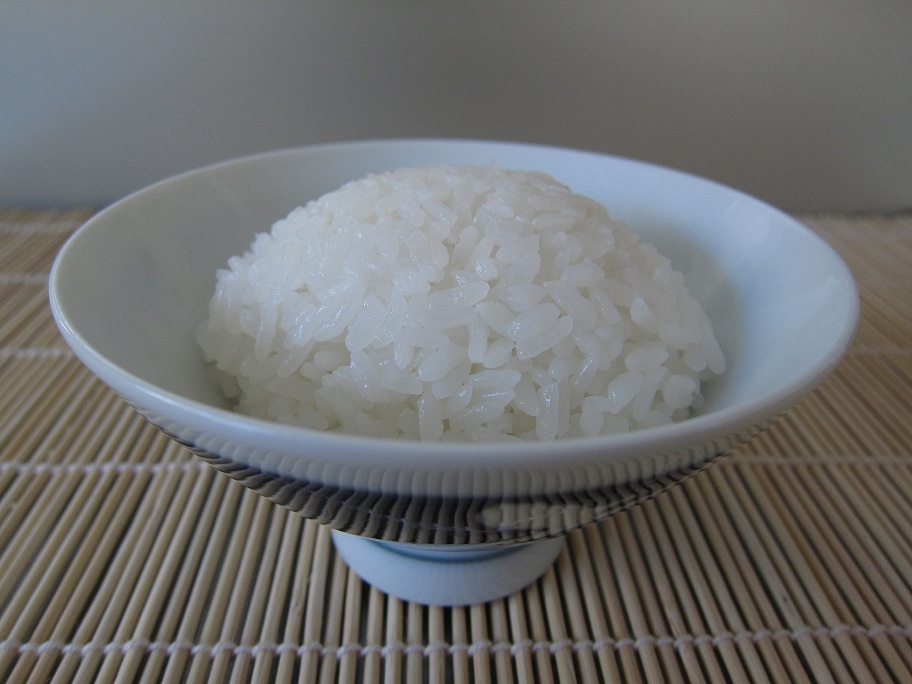How to Cook Japanese Rice
 Friday, March 22, 2013 at 4:00AM
Friday, March 22, 2013 at 4:00AM 
By Sandy Hu
A new video for Video Friday
My friend Kay remembers going home from school and having to scrub potatoes and put them on to boil for dinner. I had a similar experience with the Asian version: making rice.
It’s been years since I’ve made rice in a pot – I always use my electric rice cooker, where it’s as simple as measuring out rice and water, pressing a button and walking away until the rice is done.
But recently, in trying to help out people on Twitter wanting to know how to make rice, I thought of the technique my mom taught me years ago. This is not the definitive way to cook rice and I’ve only tried it for white, short-grain rice – the sticky rice you get in Japanese restaurants. But for this type of rice, the method works like a charm.
Some things to know:
- You need a heavy pot with a lid.
- Dry short-grain rice will yield about three times the quantity when cooked, so 1-1/2 cups of uncooked rice will make 4-1/2 cups of cooked rice.
- Once the rice is rinsed, measure water one-to-one; a cup of water to each cup of rice. (It’s actually a little more water to rice, but you’ll have residual water in the rice from rinsing.) Or use your finger to measure the depth of rice to determine how much water you need, as I show in this video.
Basic White Short-Grain Rice
1-1/2 cups short grain rice
1-1/2 cups water
- Put rice in a heavy pot. Rinse rice by running water from the tap into the pot to about 3/4 of the pot’s capacity; swirl rice around with fingers and cupping a hand at the edge of the pot, tip pot to drain water, catching any grains in your hand and returning them to the pot. Repeat the process, adding fresh water, swirling and draining until water runs clear. In last rinse, drain water through your hand as thoroughly as you can.
- Put pot of rice on stovetop and add 1-1/2 cups water. Smooth rice into an even layer. Partially cover the pot with the lid and bring water to boil over medium heat, about 3 minutes.
- Immediately turn heat to low, cover pot and simmer until all the water has been absorbed in the rice, but rice is still moist, about 8 to 10 minutes. If you simmer until the rice is bone-dry, you may burn the rice.
- Turn off the heat and let rice stand for 15 minutes. Do not open the lid during this time because the steam and residual heat in the pot is giving the rice its final steaming. After 15 minutes, open the lid, fluff the rice and serve.
Use rice with dishes such as:
Special Fork is a recipe website for your smartphone and PC that solves the daily dinnertime dilemma: what to cook now! Our bloggers blog Monday through Friday to give you cooking inspiration. Check out our recipe database for quick ideas that take no more than 30 minutes of prep time. Follow us on Facebook , Twitter, Pinterest, and YouTube.
Related posts:
Reader Comments (1)
I will probably try your recipe out as I have some serious issues cooking rice now that I am in Peru for a few months. I learnt how to make the best rice from a Japanese chef in Dirty Apron which offers the best cooking classes in Vancouver, but somehow it doesn´t work here. We used to make 1 cup of rice and add 1 and 1/2 cups of water but somehow doing this the Peruvian rice just sticks together. I have tried different types but the results is always the same. Does anybody have an advice for me?